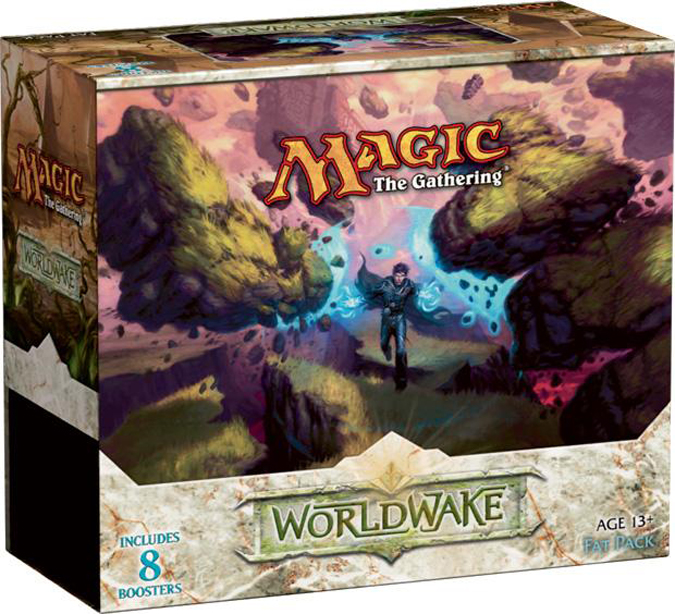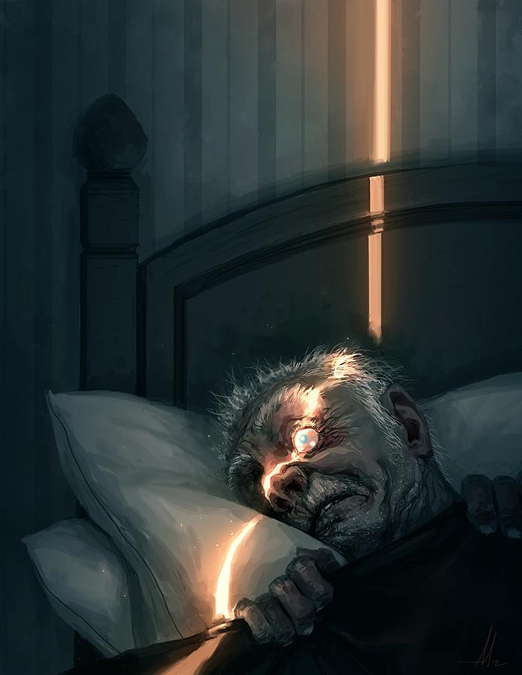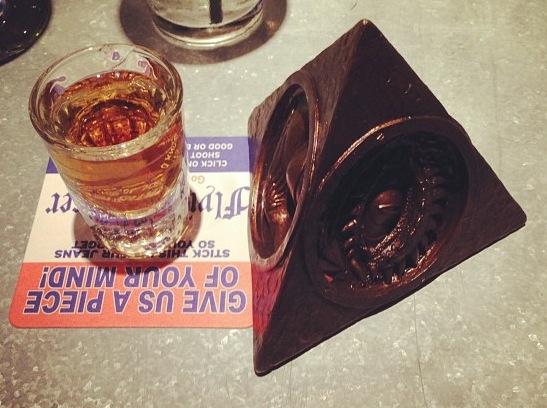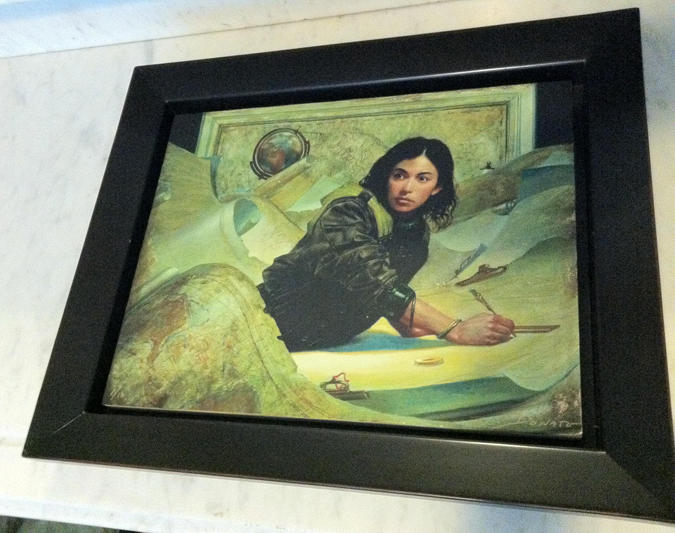I just returned from Spectrum Live 2, the second annual convention in Kansas City, MO that celebrates imaginative realistic art. I’ll explain a bit more about the convention and then give you some data to really understand what it’s all about.
Spectrum, in case you don’t know, is an annual book—a volume rather—that showcases the best in the field of fantasy and science fiction art. This year marks the twentieth anniversary of the volumes. They’re called individually “Spectrum X: The Best in Contemporary Fantastic Art.” The X is replaced by the number, and it’s relevant to GatheringMagic in that Magic art often makes it into the peer-selected annual.
The convention is a gathering of artists, art directors, collectors, and fans in the middle of America. The convention celebrates the annual book and the art field. How the art is actually selected into the annual book is that a group of art directors, artists, and industry leaders are chosen as the jury, and they spend countless hours going through the images. How it works is this:
Have a preview at the sheer number of submissions for last year’s Spectrum 19:
Each piece entered into the competition to be judged costs $20. If you have a series of five or fewer pieces, it’s $40. Wizards of the Coast—Magic for sure—has an allotted number of artworks they enter themselves, saving the artists a little money. Often, planeswalkers are submitted, as a notable example.
They have a few categories such as institutional, unpublished, and so on. You submit to one, and if you’re one of the best of thousands, you can win the silver or gold award for the category.
It’s a big, big deal to make it into Spectrum.
The Worldwake Fat Pack’s image below by Eric Deschamps made it into Spectrum 16. He then put that image on the back of his business card. There are very few legitimizing factors to denote that an artist is incredible in this imaginative realism field. Spectrum is the one main way—despite the jury system being subjective.

Also notable is that when an artist first makes it into Spectrum, that piece almost always goes into his or her personal collection. As I mentioned the other week with Randy Gallegos, his Counsel of the Soratami was that piece. For Steven Belledin, that not-for-sale piece is Surgical Extraction. It’s beautiful.
Now, that’s not to say that all Spectrum-included paintings stay with artists. They sometimes are sold, but the premium is very real to obtain it from an artist. You have to love it more than the artist does, which will be significant.
One of my art-collecting goals is to eventually acquire an award-winning piece, and I hope it’ll be a Spectrum inclusion. Might take a while to get there—my art budget took a pretty good hit this weekend.
As for the current year, Ruric Thar, the Unbowed was up for an award. Tyler Jacobson did an incredible job with Ruric Thar. Most notable is that I snapped a picture of his sketchbook while I was at Spectrum Live 2 this past weekend.
Ruric Thar from @jacobsontyler's sketchbook at @sfantastical. Pretty awesome. twitpic.com/crryq7 #mtg #vorthos cc @misterorange
— Mike Linnemann (@VorthosMike) May 19, 2013
Tyler straight-up had a sketch, and boom, he made the final from it. Unfortunately to you art enthusiasts, he sold his originals pencils for Ruric Thar, but he has canvas prints for $80, which is mounted to a gator board. They’re really nice and perhaps a future birthday/Christmas gift—if he’s your commander of course. If you want to go big, you could e-mail Tyler to see if he’d sell the sketchbook page, but that’s just crazy talk!
Also notable from the convention is another first-sketch-to-final-artwork. I finally met Andrew Mar in person, and his first sketch of an image was completed and submitted, and it won an award.
Andrew works for a social gaming company, but he isn’t new to TCG art. Use the Google; he’s been around a while despite being a young man and fellow Minnesotan now living in the Bay area. He hasn’t broken into Magic yet, but I would not be surprised if he did within the next few years.
So, the story is that Andrew works full-time and decided to sketch out a piece of Edgar Allen Poe’s “Telltale Heart” story. He took the image to final and then submitted it to Spectrum in the unpublished category.
This is his submission:

It’s absurdly good.
It’s so good that it beat out Kekai Kotaki for the silver award in all the thousands of unpublished works submitted. Cory Godbey, "The Fish Master" won gold, and it was very deserving. That made sense. Seeing a young man, nervous as hell, walking up to the stage with no speech and no plan was quite thrilling—and very unplanned.
After the awards ceremony, a few young artists and I went out for drinks to celebrate:

Yeah, it’s basically a Triforce.
SPECTRUM LIVE DATA
Here’s a quick primer; I had to eliminate some points from the data:
Michael Whelan, while he made Nalathni Dragon a long time ago, hasn’t made anything for Magic since. Brom is a similar example; he had a temporary table but no Magic presence. There were many artists who had prints, but the emphasis on Magic was quite low if shown visibly at all. (Most had prints or artist proofs under the table for example.)
Of all the exhibiting one hundred seventy-three artists, thirty-six have made three or more Magic cards. The vast majority of artists who have worked on Magic were at a table next to another Magic artist. I would recommend asking convention organizers to situate this more in the future.
Average Number of Magic Cards: 50; Median: 27
This tells us that Spectrum Live has a barrier for new artists. This is confirmed, obviously, by the fact that it’s in Kansas City. You need to have a following of fans and probably to have shown your work at a Grand Prix before coming to Spectrum Live. I would encourage more recent people to have a table and share it with another young artist. It lowers the cost, and you both benefit.
Before you get there, I would volunteer to be at a Pro Tour Qualifier or a larger local event on Saturday for signings, maybe for only three to four hours. Perhaps a store would open an hour early before registration begins, allowing two full hours before the event starts. You can linger around for a bit and then pack up for lunch and the rest of your day. It’s something for artists and tournament organizers to look into.
Average Cost of an Original Artwork: $455; Median: $467
This data point is difficult because many, many pieces were listed as “please inquire” for pricing. I find that gallery-type interaction to be great online, but at a convention, only those interested in buying works will commit. That’s fine because fewer people kick the tires. I would argue that negotiating is healthy, and those $600 artworks selling for $500 covers your convention costs, and then selling one major piece can make the weekend a success.
Lowering the ability to sell pieces is just bad marketing. You want the buyer to know the four Ps: Placement, Promotion, Price, and Product. If an original artwork is visible (placement), has a deal (down 10% or something), a known price (a post-it note is enough), and a displayed medium (quality and authenticity are implicitly guaranteed), sales will increase.
It’s notable that artwork has crept up. Most pieces about a year or two ago hovered around the $200 to $300 rate. Most things are now $400 and above. If you see pieces for that $200 price point, it’s often that the artist either hasn’t update the pricing, the piece is small and worth that much, or it’s not often played or seen, making it a hard sell.
Also, artists: I highly recommend not ever painting over Magic pieces.
Even the “worst pieces”—in your mind—are worth $100. Every. Single. One.
That beats the cost of the material. Post it to your social media page; it’ll move. If not that, contact me. I’ll get it gone for you.
Original Sketches N/A
Only three artists had Magic original sketches at the table.
Artist should really bring these. They have some value and encourage repeat customers.
Average Cost of a Small, Medium, and Large Print
- Small: 8”×10” and 8.5”×11” roughly: $10.50 Average, $10 midpoint
- Medium: 12”×14”, 13”×19”, 14”×20” roughly: $16.78 average, $20 midpoint
- Large: 20”×30” and up: $40 average, $40 midpoint
Prints, according to Spectrum Live, should be in the $10/$20/$40 range.
I highly recommend having that low-cost, unlimited-print-run cheap offering. Donato Giancola had a non-Magic piece for $5. It sold like hotcakes. Granted, he’s a living master, but a 18”×24” for five American dollars is a snap-buy.
Average Cost of an Artist Proof: $5.54; Median: $5
Artists are really adopting variable price points of playability to artist proofs. They’re becoming much more involved in seeing what is moving faster. Also notable is that less-played commons are being offered cheaper. Negotiations for proofs never really happen for modern-framed cards. Older ones? Absolutely.
Most artists don’t number their proofs from 1 to 50, but it’s beginning to happen more and more. I heard from a bunch of artists who asked whether “that’s a thing.” I told them “yes” and they absolutely should. If the artist is a traditional painter (oil, etc.), the 1/50 or the 50/50 often goes with that art only. I think it’s a very good change for collectability.
Number of Artists Who Number their Artist Proofs from 1–50: 2
I guarantee this will be exponentially higher by this time next year. I’m calling it now.
Average Cost of a Play Mat: $20; Median: $20
There were very, very few play mats. UltraPro has an exclusive contact with Wizards of the Coast, making all Magic artworks on play mats. You’ll notice when artists do it for themselves, it’s often a bit whimsical or . . . similar to Magic. For example, all those squirrel play mats? Indeed.
Average Cost of Signing a Card: $0
Not a single artist charged for a signature at the convention. This is the single most personal crusade I want changed.
I know a few artists who charge $.25 or $1 per signature if you send them the cards. Often, they do this because people don’t have return postage or a self-addressed, stamped envelope or even a top loader!
I fully believe $.25 per card at a convention and $1 through the mail is not only acceptable, but it makes good business sense, and here’s why:
- Magic players understand collectability better than nearly anyone.
- They know when an artist passes away, a signed card is worth more.
- They know that some people value a signed, perfectly-mint card is worth something slightly more than the card alone.
- Players also drop stacks of cards for artists to sign, trying to get some “value” out of the convention for free. If artists charge for signatures, the value actually increases for signed cards because there’s a barrier. It’s not easy to do, making it worth slightly more.
- If a sign on an artist’s table says $1 per play set to be signed, it’s about the same as a tip, which is perfectly encouraged; it just requires players to recognize that signing a hundred cards hurts. There needs to be an incentive for artists to sign cards. By putting money down, it lowers the amount of signing but guarantees small money to be made. This small increase in liquidity allows artists to buy sketchbooks, prints of other artists, or lunch at the convention. There’s math to be done, such as: Buy a print, get a play set of signatures free. Anything to incentivize people to read your sign and analyze the deals is good for MTG business because players expect it.
Average Alteration Cost: $13.33; Median: $10
This used to be $10. People are asking artists more for alterations, and thankfully, artists are understanding that for a little work, a large sum of money can be made over a weekend in trade for a sore hand.
I like Dan Scott’s idea of alteration tiers:
- $10 Simple design, few colors, 5 minutes
- $20 Multiple colors, 10 minutes
- $30 Multiple colors, full art, 15 minutes
More extensive altering costs more, clearly. Terese Nielsen and others have full plans in place, but for a convention, keep it simple and cheap enough that an ATM visit can cover it.
Wizard of the Coast Presence: 2
Jon Schindehette, Creative Director for D&D, and Dawn Murrin, Art Director for D&D and as of late, MTG too, were both there—I heard there might have been others, but I didn’t see them.
The Magic Creative team is having some transition currently.
I fully believe that they should be here for recruiting young artists from the Midwest, obviously, but also to feature the art of their game to industry titans. While no cards should be spoiled here, style-guide imagery and art previews would build enormous buzz. Minneapolis, Chicago, Kansas City, and Saint Louis have enough Magic players to draw an enormous crowd. We Vorthoses aren’t the most numerous, but give us something to expect—and make it a bit exclusive—and folks will show up. Field of Dreams is within earshot. Build it, and we’ll come. This is a perfect opportunity in the Marketing/Brand timeline to showcase some art for either the summer core sets or tiny previews of the fall block art.
Number of Pieces I Had to Buy: 1
For a little under $100, a giclee-mounted and framed-in-a-10/10 print run seems pretty fun from Donato Giancola. I love the Odyssey Cartographer piece. It was actually in Spectrum 9. Of course, I had to buy something; I won’t go to a convention without picking up something:

Donato’s good at the whole art thing.
It was a wonderful weekend, and I’m still digesting and processing everything that happened. Expect a lot of echoes from the convention in the next few months. A bunch of things changed, and I need to research whether the early adopters and anecdotal changes are real. We’ll see.
As for next year, the two editors Arnie and Cathy Fenner are stepping down. Flesk Publications is taking over. I’m not sure if Spectrum Live will stay in Kansas City, home of Dan Scott and barbecue burnt ends, but I wouldn’t be against having it move around to other Midwest cities.


























